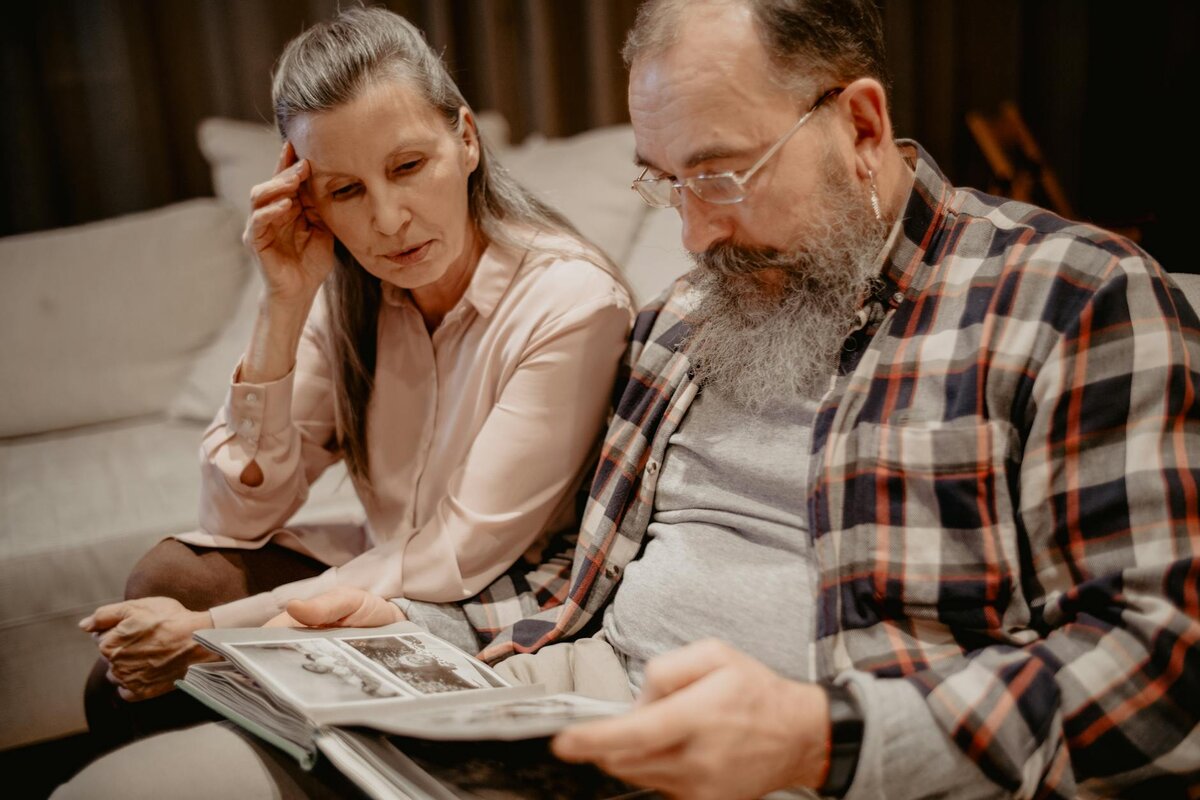Let’s get into the nitty gritty, shall we?
Broke your arm in a cycling accident and suddenly can’t do your trade work? Here’s the harsh reality - being self-employed and injured leaves you in a precarious position that most people don’t think about until it happens to them.
Unlike employees who get statutory sick pay automatically, self-employed people have to actively claim benefits when injury prevents work. And the benefit system for self-employed people is surprisingly complex and often misunderstood. An online benefits calculator can help you quickly estimate which benefits you might be able to claim, based on your personal circumstances.
I’ve helped dozens of self-employed clients navigate benefit claims after accidents and illnesses. The good news? There’s more support available than most people realise. The bad news? You need to know exactly what to claim and when.
Benefits Available to Injured Self-Employed People: Overview
The UK benefit system provides several types of support for self-employed people unable to work due to injury, though none replicate the simplicity of statutory sick pay that employees receive. There are several benefits available, but not everyone is eligible for most benefits some are restricted based on your circumstances, such as immigration status or income.
Main benefits available:
- Universal Credit (includes element for limited capability for work)
- New Style Employment and Support Allowance (contribution-based ESA)
- Personal Independence Payment (for daily living and mobility needs)
- Statutory Sick Pay (only if you employ yourself through a limited company)
Depending on your situation, you may be eligible for several benefits listed above.
The key difference from employed workers is that you need to actively apply for these benefits - nothing happens automatically. Miss the application window, and you might lose months of potential support.
Your National Insurance contribution history affects what you can claim. Self-employed people pay Class 2 and Class 4 contributions, which provide access to different benefits than the Class 1 contributions employees pay.

Universal Credit for Self-Employed People Who Can't Work
Universal Credit is the main benefit for self-employed people unable to work due to injury. It’s means-tested, so your savings, partner’s income, and other circumstances affect how much you receive. Universal Credit is designed to support people on a low income, and if you are struggling to pay your rent, it can include help with housing costs.
The basic Universal Credit includes a standard allowance, then additional elements based on your circumstances. If you’re unable to work due to injury, you can apply for the “limited capability for work” element.
Universal Credit standard allowances (2024-25):
- Single under 25: £292.11 monthly
- Single 25 or over: £368.74 monthly
- Couple both under 25: £458.51 monthly
- Couple one or both 25+: £578.82 monthly
Additional elements for limited capability for work add £146.31 monthly (limited capability) or £390.06 monthly (limited capability for work and work-related activity).
The means-testing is comprehensive. If you have savings over £6,000, your payments reduce. Over £16,000 in savings, and you typically can’t claim Universal Credit at all.
How Self-Employment Affects Universal Credit Claims
Here’s where it gets complicated - Universal Credit treats self-employed claimants differently from unemployed people, even when injury prevents you from actually working.
If you’re established as self-employed, the system might still assume a “minimum income floor” - essentially assuming you earn minimum wage for your expected working hours, regardless of actual earnings. Your Universal Credit payments may be affected by the minimum income floor, as it can reduce the amount you receive if your actual earnings are lower than the assumed amount.
Minimum income floor:
- Usually applies after 12 months of self-employment
- Assumes you earn at least National Minimum Wage × expected hours
- Can be suspended during periods of limited capability for work
- Requires medical evidence proving you can’t work
The key is getting the minimum income floor suspended by proving your injury genuinely prevents work. This requires medical evidence and often a Work Capability Assessment. It is important to provide all relevant details about your situation, including medical evidence and any changes in your circumstances, to ensure your claim is assessed accurately.
Without suspension, Universal Credit might calculate your benefit as if you’re still earning, even though injury has stopped all income. This catches out loads of self-employed people who don’t understand the system.

New Style Employment and Support Allowance (ESA)
New Style ESA is a contribution-based benefit that doesn’t depend on your savings or partner’s income. If you’ve paid enough National Insurance contributions, you might be entitled regardless of your financial position.
This is the self-employed person’s closest equivalent to sick pay, though it’s much less generous and harder to claim than statutory sick pay for employees.
New Style ESA rates (2024-25):
- Assessment phase (first 13 weeks): Up to £67.20 weekly
- Main phase with limited capability: Up to £67.20 weekly
- Main phase with limited capability for work-related activity: Up to £128.89 weekly
To qualify, you need to have paid National Insurance contributions in the two complete tax years before the year you’re claiming. For self-employed people, this means sufficient Class 2 or Class 4 contributions.
Unlike New Style ESA, self-employed people are not eligible for the new style Jobseeker's Allowance (JSA), which is another contribution-based benefit. Jobseeker's Allowance is generally available to those who have recent work history as an employee and meet specific eligibility criteria, but self-employed earnings do not count towards this. However, if you are eligible for New Style ESA, you may be able to claim it even if you cannot claim contribution-based Jobseeker's Allowance.
I’ve seen self-employed clients who thought they’d paid enough contributions, only to discover their earnings were too low in previous years to qualify. It’s heartbreaking when people discover this while injured and desperate.
Personal Independence Payment (PIP) for Injury-Related Needs
PIP isn’t about replacing lost income - it’s specifically for extra costs related to disability or long-term health conditions. If you have a disability or a long-term health condition, PIP can help with the additional costs you face. However, many injury-related situations qualify for PIP claims.
PIP has two components: daily living (help with daily tasks) and mobility (help getting around). You can qualify for one or both depending on how your injury affects you.
PIP payment rates (2024-25):
- Daily living standard: £72.65 weekly
- Daily living enhanced: £108.55 weekly
- Mobility standard: £28.70 weekly
- Mobility enhanced: £75.75 weekly
To qualify, your condition must have lasted (or be expected to last) at least 3 months, with effects expected to continue for at least 9 months total. This rules out short-term injuries but covers serious accidents with lasting impacts.
The assessment looks at specific activities like preparing food, washing, dressing, making decisions, and moving around. You don’t need to be completely unable to do these things - significant difficulty qualifies.
PIP is one of several disability benefits available to people with long-term health conditions or disabilities, providing financial support if you are unable to work or perform daily tasks.

Work Capability Assessments: What to Expect
If you claim Universal Credit or ESA citing inability to work due to injury, you’ll face a Work Capability Assessment. Understanding this process is crucial because it determines your benefit entitlement.
Before the assessment, you will need to complete a form detailing your limitations and how your condition affects your daily life.
The assessment has two parts: a questionnaire about your limitations, then often a face-to-face or telephone assessment with a healthcare professional employed by the Department for Work and Pensions.
Assessment areas:
- Mobilising and physical function
- Standing and sitting capacity
- Reaching and manual dexterity
- Communication and social interaction
- Consciousness and cognition
- Mental health and behavioural factors
They’re looking for how your condition affects your ability to work reliably and consistently, not just whether you can physically do tasks on good days.
I always tell clients to focus on their worst days and typical days, not their best days. Many people undersell their limitations by describing what they can do when they’re having a good day.
Medical Evidence Requirements for Injury Claims
Strong medical evidence makes the difference between successful and rejected benefit claims. The DWP doesn't just take your word that you're injured - they need professional verification.
Essential medical evidence:
- GP records documenting your injury and ongoing treatment
- Hospital discharge summaries for serious injuries
- Physiotherapy or specialist reports
- Prescriptions showing ongoing medication needs
- Evidence of how the injury limits daily activities
Start gathering this evidence immediately after injury, not when you apply for benefits weeks later. Ask your GP for detailed records and letters specifically for benefit claims.
The medical evidence should clearly state how your injury prevents you from doing your specific self-employed work. Generic statements like "patient has a back injury" aren't as powerful as "patient cannot lift, bend, or stand for extended periods, preventing them from performing their work as a carpenter."

Claiming Benefits While Still Legally Self-Employed
Here’s a confusing aspect - you can claim benefits for being unable to work while still maintaining your self-employed status for tax purposes. This isn’t fraudulent; it’s how the system works.
You might still be registered for Self Assessment and paying Class 2 NICs while claiming Universal Credit or ESA because you’re injured. The key is accurately declaring that your current earnings are zero or minimal due to injury.
Reporting requirements:
- Continue reporting self-employment status to HMRC
- Declare injury-related zero or reduced earnings to DWP
- Keep evidence of business continuity plans during recovery
- Report any income from residual business activity
You may also need to update your online benefits account with any changes in your circumstances, such as your earnings or work status. Your current living arrangements where you live and who you live with can also affect your benefit entitlement, so make sure to report these details accurately in your account.
Some self-employed people worry that maintaining their business registration while claiming benefits looks suspicious. It doesn’t - the system understands that self-employed people often maintain their business structure while temporarily unable to work.
For guidance on managing your self-employed tax obligations during periods of reduced activity, our comprehensive tax guide helps you navigate these complex situations.
Benefits You Can't Claim as Self-Employed
Understanding what benefits aren’t available helps avoid wasting time on impossible applications and focuses your effort on benefits you can actually get. Self-employed people are not eligible for certain benefits that are available to employees.
Not available to self-employed people:
- Statutory Sick Pay (unless you employ yourself through limited company with PAYE)
- Contributory Jobseeker’s Allowance (self-employed status disqualifies you)
- Maternity Allowance at employed rates (self-employed rate is lower)
The Statutory Sick Pay exclusion is particularly frustrating for self-employed people. Employees get £109.40 weekly automatically from day 4 of illness, but self-employed people get nothing equivalent.
Some self-employed people think they can claim SSP by employing themselves through a limited company. This technically works but involves complex arrangements and often isn’t worth it unless planned well in advance.
Note: Benefit rules may differ in Northern Ireland. If you live in Northern Ireland, check local guidance to confirm which benefits apply.

Combining Benefits: What You Can Claim Together
Many self-employed people don’t realise you can claim multiple benefits simultaneously. Understanding which combinations work maximises your support during injury recovery.
Benefits you can claim together:
- Universal Credit + PIP (PIP doesn’t affect Universal Credit amounts)
- New Style ESA + Universal Credit (ESA reduces Universal Credit but claiming both often gives more total)
- Universal Credit + Carer’s Allowance (if caring for someone while injured yourself). If you are a carer, you may be eligible for additional support and benefits specifically for carers.
The interaction between different benefits is complex. Some benefits count as income for others, reducing the amounts you receive. Professional welfare rights advice helps optimise your claims.
PIP is particularly valuable because it’s not means-tested and doesn’t reduce other benefits. If your injury creates daily living or mobility needs meeting PIP criteria, definitely claim it alongside Universal Credit or ESA. Combining certain benefits can provide extra money to help with living costs, especially for carers and those on a limited income.
How Long Benefits Continue During Recovery
Benefit duration depends on your recovery timeline and reassessment outcomes. Understanding typical timescales helps with financial planning during injury recovery. Age is an important factor in determining which benefits you can claim, and eligibility for some benefits changes when you reach state pension age.
Universal Credit: Continues as long as you meet the eligibility criteria. Regular reassessments check whether you’ve recovered sufficiently to work.
New Style ESA: Contribution-based ESA lasts up to 12 months maximum. After this, you’d need to transition to Universal Credit if you still can’t work.
PIP: Usually awarded for set periods (typically 2-5 years) before review. Some awards are indefinite for permanent conditions.
The transition from one benefit to another, or from benefits back to work, needs careful planning. Stopping benefits too early can create financial gaps if you’re not quite ready to return to full self-employed work.

Appealing Rejected Benefit Claims
Many initial benefit claims get rejected, often incorrectly. Understanding the appeals process is crucial because it frequently overturns a wrong benefits decision.
Support services are available to help you with the appeals process. You can contact or speak with an advisor for guidance phone support is available if you need assistance.
Appeal stages:
- Mandatory reconsideration (asking DWP to review their decision)
- First-tier tribunal (independent panel reviews the case)
- Upper tribunal (for errors of law in first-tier decisions)
The mandatory reconsideration stage is crucial - submit additional medical evidence and clearly explain why the decision was wrong. Many successful appeals happen at this stage without needing tribunals.
If mandatory reconsideration fails, the tribunal stage has high success rates for appellants. Around 70% of ESA and PIP appeals succeed at tribunal, suggesting many initial rejections are incorrect.
Final Thoughts
Self-employed people have less automatic protection than employees when injured, but significant benefit support exists if you know what to claim. The key is understanding the system and gathering strong medical evidence early.
Don't assume you can't claim benefits because you're self-employed - Universal Credit, ESA, and PIP are all available in appropriate circumstances. Managing these claims alongside your tax obligations doesn't have to be overwhelming. Our free self-assessment app helps you keep your financial administration organised even during difficult periods when injury affects your ability to work.











